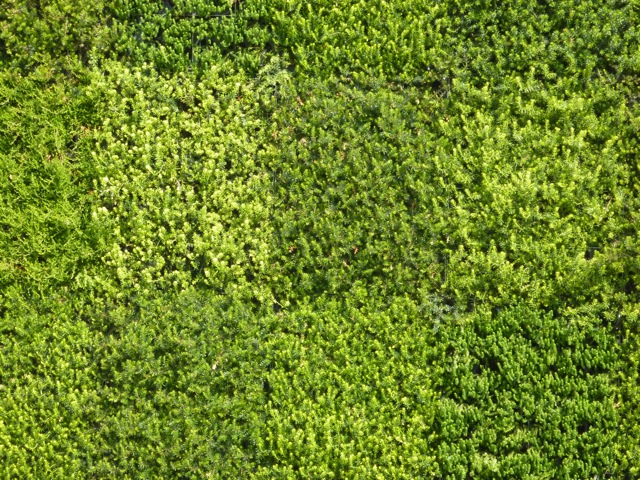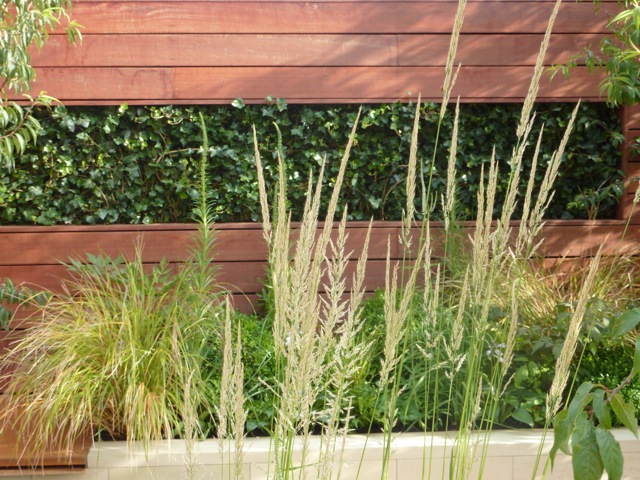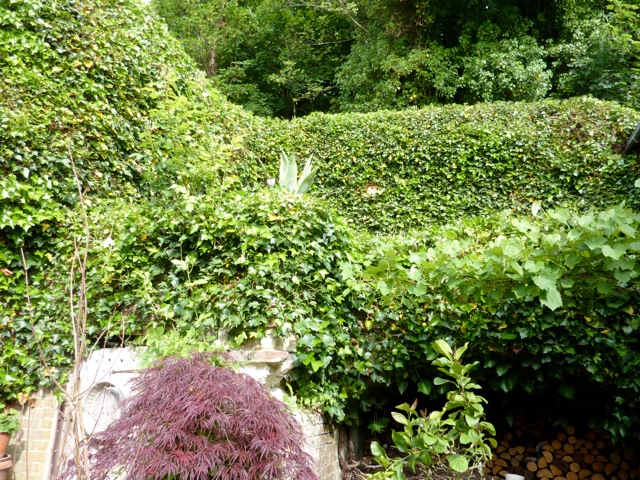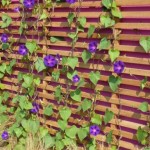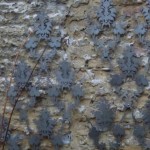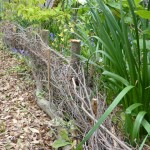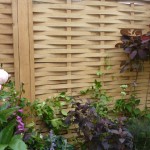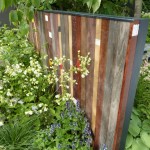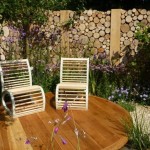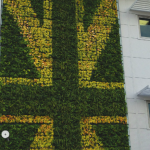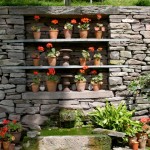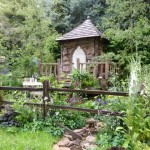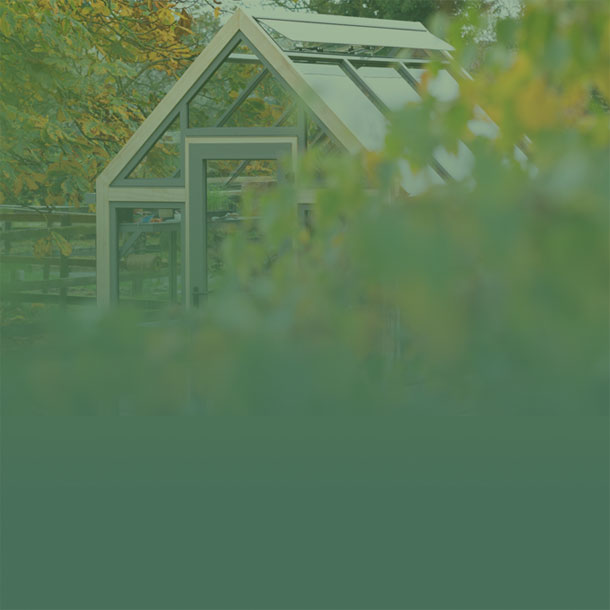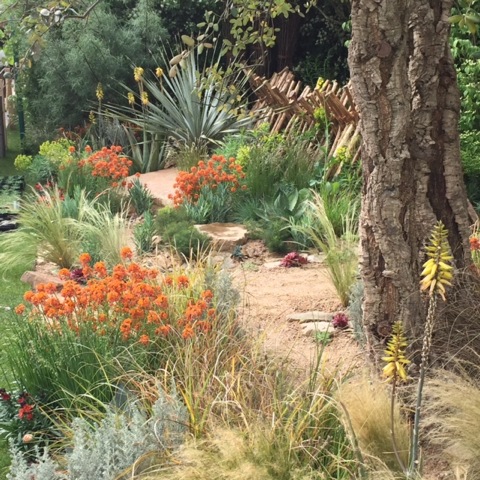-
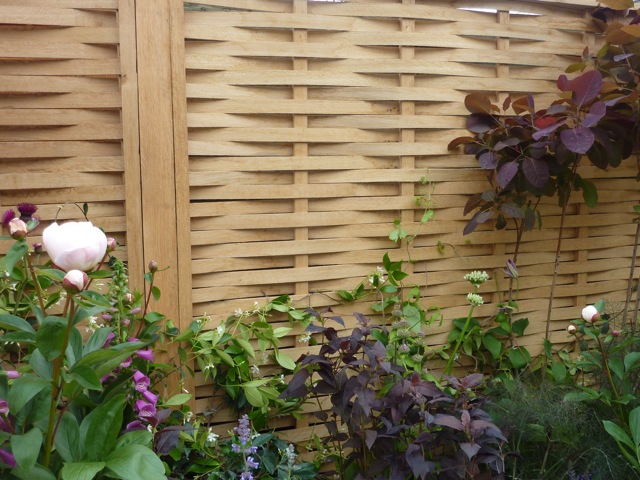
Fences and Screens
What do you want to Achieve?
This may seem like an odd question, but it addresses the function of the fence, wall or screen in your garden. As with most aspects of garden design, analysing what you are looking for makes finding a solution easier.
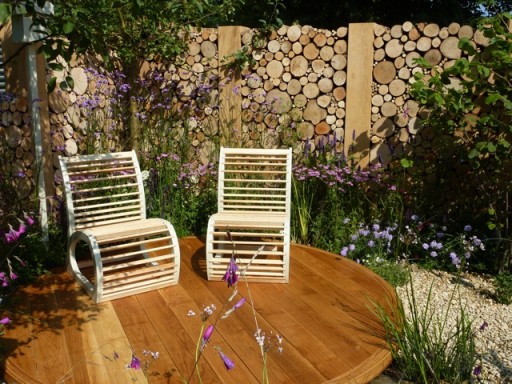
Sturdy and long lasting oak uprights are filled with bays of different size logs to form an interesting textured surface – the addition of a surface e.g. slate or tile on top of the wall would extend the life of the logs.
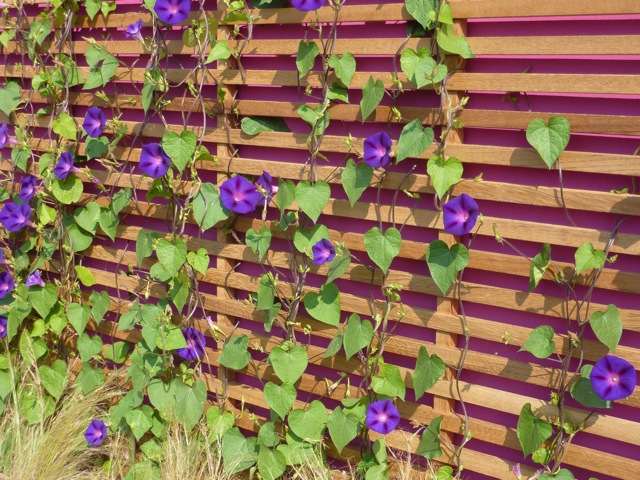
Contemporary trellis panels are given extra impact with a bright background colour that is echoed by the flowers.
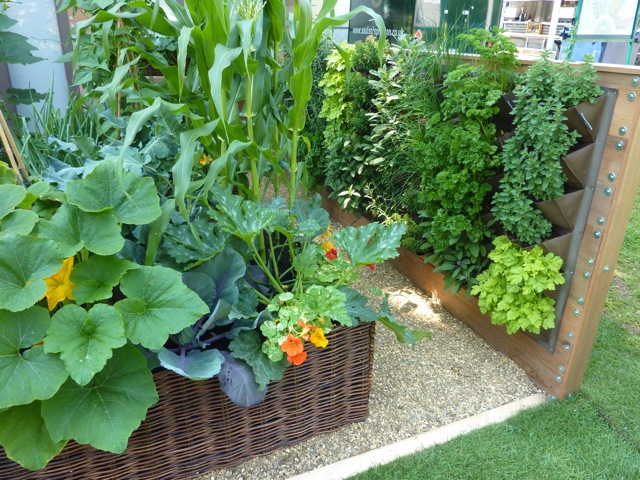
Herbs grow in pockets fixed to the wall in this garden.
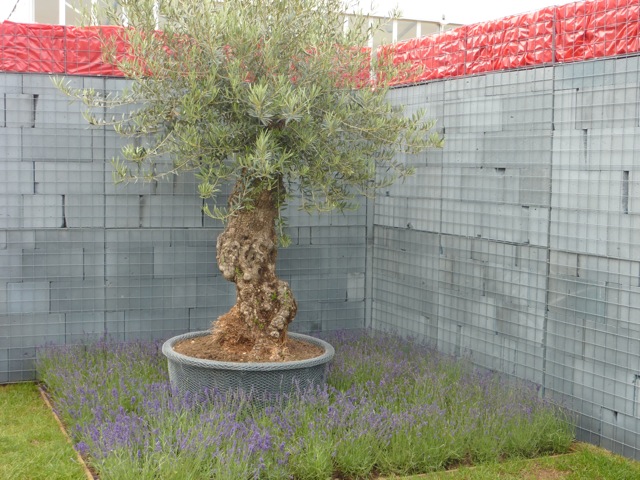
This wouldn’t be to everyone’s taste but would make a great temporary wall (and way of storing materials) while building work is carried out.
•A Secure Boundary– a tall fence, ideally topped with trellis, or a wall, is the most secure boundary. Planting a thorny hedge or climbing roses against it adds a further layer of security.
• Privacy – here too a tall fence or wall will certainly do the job, but there are other, less solid options. One is to plant a hedge – evergreen for year round privacy – or deciduous if only needed when the garden is in active use. Slatted fence panels or small-squared latticework trellis provide privacy, but have a softer appearance.
• Block an Eyesore – if the eyesore is within the garden e.g. an ugly garage, an oil storage tank, dustbin area, then trellising or fence panels planted with climbers will generally do the trick. If the problem is outside your boundaries you may find that drawing the eye away from it is more easily achieved than trying to obscure it. Strong planting and attractive hard landscaping will attract attention, making an eyesore less dominant. Alternatively, planting the boundaries with shrubs and trees will give a sense of enclosure and help make the eyesore less apparent.
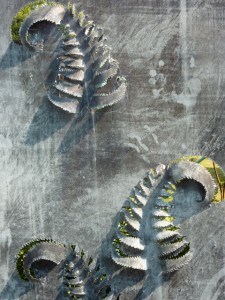
Laser cut metal is a relatively new material that can be used for elegant and decorative screens and walls• Separate the Garden from its Surroundings – if you want to define where the garden ends it isn’t always necessary to create a solid barrier, in fact it is often more attractive if there is an element transparency. Post and rail fencing, or a low growing hedge (e.g. Rosa rugosa) will define the boundary without drawing too solid a line. The ultimate invisible boundary is a haha (a ditch with one straight side) which stops access to the garden but creates the illusion that it continues into its surroundings.
• Dividing the Garden – a garden is always more interesting if you can’t see all of it at once – and dividing a small garden can actually make it seem much larger. Hedges used as divisions can be evergreen or deciduous, or both, but walls or fences should be made of the same or similar materials or may end up looking bitty. Professional garden designers are good and mixing and matching different materials, but unless you are very confident you may do better to aim for consistency.
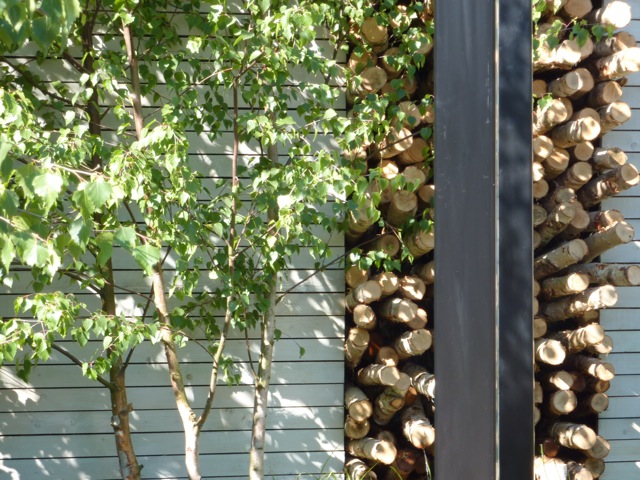
A wall can be both decorative and functional this one forms an attractive backdrop to the trees and incorporates a log store
The Importance of Location
However much you love a particular type of fence or wall, if it is at odds with the surrounding area it just won’t look right. A drystone wall will never look right in an urban environment and a contemporary living wall would look ludicrous in the depths of the country. Choose materials that echo what is used locally e.g. stone or brick from local quarries or brickworks where possible, or a close match if not. Rustic fencing looks wonderful for a country cottage, less so for a townhouse. Contemporary is great in an urban setting, but unless done really well can stick out like a sore thumb in the countryside.
The Importance of Borrowed Views
When a neighbour has a beautiful garden – and it doesn’t rob either of you of your privacy – then a low hedge or see-through trellis makes much more sense than a high barrier that obscures the view. Similarly, high hedges round a country garden cut the garden off from its surroundings, but dips in the hedge or occasional gaps will frame it.
The following photos from posts on the blog may give you some inspiration.

